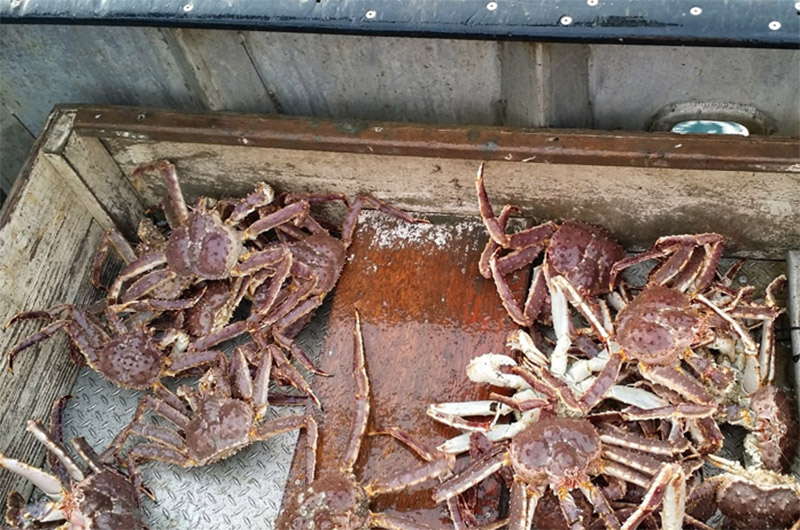Alaska red king crabbers fished on a total allowable catch of 4.3 million pounds in the 2018-19 season, the lowest since 1982, when managers called for an in-season revision and limited the harvest to 4.7 million pounds.
The TAC for the 2019-20 season could be even more meager — unless an unprecedented number of crab show up in summer trawl surveys.
“We still don’t know yet what’s out there, but we’re expecting the downward trend to continue,” says Miranda Westphal, Bering Sea and Aleutian Islands management biologist, in Dutch Harbor. Biologists were getting the first preliminary numbers in late August.
Low biomass brought king crab closures to the Bering Sea king during the 1983, 1994 and 1995 seasons. The most recent precipitous decline in the TACs began with a quota of around 20 million pounds for the 2008-09 season, and the crab fleet fished on a TAC of 6.6 million pounds in the 2017-18 season.
As for what drives calculations underlying the TACs, that rides on scientific modeling of the effective biomass in the trawl surveys. Westphal says the number of crab mature enough to mate constitute effective biomass.
The thresholds for opening the fishery under the present management regime has been set at 8.4 million mature females and an effective biomass of 14.5 million pounds. If the effective biomass falls below certain ranges in pounds, managers choose from three alternatives in setting the exploitation rate. They are 10 percent, 12.5 percent and 15 percent. The 2018 biomass estimate came in at less than 34.75 million pounds, leaving managers to select a 10-percent exploitation rate.
Last year’s (2018-19 season) ex-vessel prices for red king crab settled out at a preliminary average $9.27 per pound, which was slightly higher than $9.05 per pound processors paid during the 2017-18 season and down from a high of $10.18 for the 2015-16 season.
The all-time record high ex-vessel price of $10.57 per pound was paid in 2011.







